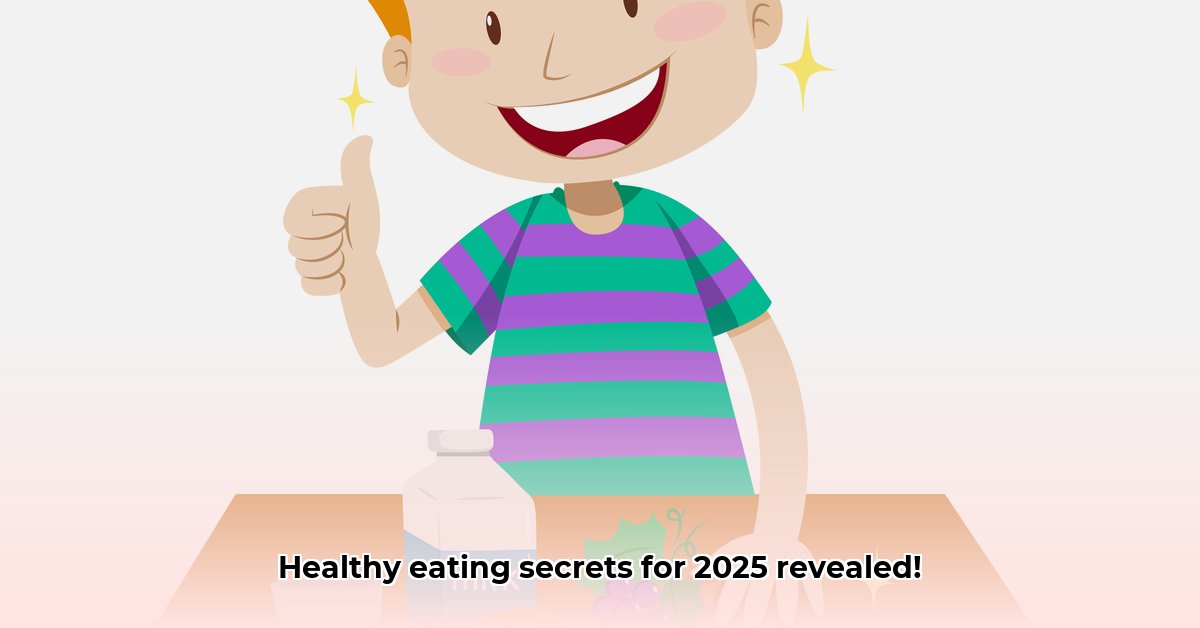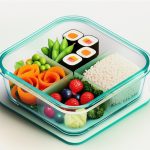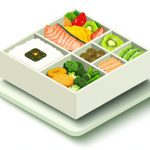Feeling overwhelmed by the ever-changing landscape of healthy eating? It’s easy to get lost in conflicting advice and fad diets. But what if healthy eating could be simple, enjoyable, and sustainable? For a structured approach, try our 30-Day Challenge. This guide will help you cut through the confusion and build healthy habits that last, offering actionable strategies you can start using today to feel your best.
Healthy Eating: Actionable Tips for a Healthier 2025 and Beyond
Ready to revamp your eating habits? Let’s ditch the fads and focus on changes that are sustainable and enjoyable.
Unleash the Power of Plant-Forward Eating
Forget boring salads! Plant-forward eating is about vibrant colors, diverse textures, and delicious flavors. This doesn’t necessarily mean going fully vegetarian or vegan; it simply emphasizes incorporating more plant-based foods into your diet. Think lentil soup, black bean burgers, or a colorful stir-fry packed with vegetables.
- Prioritizing whole, plant-based foods is key for both health and the planet.
- Aim to fill at least half your plate with these foods at each meal.
- Plant-based alternatives are gaining popularity; choose options with minimal processing and added sugars.
Practice Mindful Eating for Satiety and Enjoyment
We’re all busy, but let’s slow down and savor our food. Mindful eating connects you with your body’s hunger and fullness signals, preventing overeating. Turn off distractions, pay attention to the flavors and textures of your food, and chew thoroughly.
Utilize Hydration: Water is Essential
Water aids digestion, nutrient absorption, and keeps you feeling energized. Aim for at least eight glasses a day, roughly two liters. Carry a reusable water bottle and sip throughout the day. Infuse your water with lemon, cucumber, or berries for extra flavor.
Snack Smart with Nutrient-Dense Options
Smart snacking fuels you the right way. Keep fruits, vegetables, nuts, seeds, or yogurt handy for quick and healthy snacks. Avoid processed snacks loaded with sugar, unhealthy fats, and artificial ingredients. Prepare snack packs in advance to avoid impulsive choices.
Explore Your Personalized Nutrition Needs
Forget one-size-fits-all diets. Your nutritional needs are unique, influenced by factors like age, activity level, genetics, and health conditions. Consider working with a registered dietitian or a certified nutritionist to create a personalized plan.
- A sustainable healthy eating plan balances personal nutritional needs with environmental responsibility.
- Personalized meal planning offers significant benefits, including improved dietary adherence, reduced food waste, and optimized nutrient intake.
- Emerging research in personalized nutrition is promising, but long-term effects and widespread accessibility are still under investigation.
Embrace Sustainable Food Choices
Sustainable eating is better for your health and the environment. Buying local produce, reducing food waste, choosing sustainable protein sources, and minimizing processed foods all contribute to a more sustainable food system.
“Supporting local farmers and choosing seasonal produce significantly reduces your environmental footprint,” confirms Dr. Emily Carter, a leading environmental scientist at the Sustainable Food Institute.
Tech as a Supportive Tool
Apps can track calories, macros, and help you build healthy habits. Use technology as a supportive tool, not a replacement for mindful eating and balanced choices. Focus on apps that promote overall well-being rather than solely focusing on weight loss.
Cope Effectively with Dietary Setbacks
Life happens, and you might deviate from your healthy eating plans occasionally. Don’t beat yourself up! Focus on your overall progress and the small victories you’ve achieved. One indulgent meal doesn’t negate all your healthy choices.
Remember: It’s a Journey, Not a Sprint
Healthy eating is a long-term commitment, not a quick fix. Be patient, celebrate your wins, and enjoy the process. Focus on building habits that you can maintain for the long haul.
Find Your Community
Making healthy changes is easier when you’re surrounded by support. Find friends, family, or online communities who share your goals and can cheer you on. Share recipes, tips, and challenges with each other.
The Bottom Line: Small Steps, Big Impact
The key to lasting healthy eating habits is to focus on small, manageable changes. Start with one or two of these tips and gradually incorporate more. Consistency is key!
How to Create a Personalized and Sustainable Nutrition Plan
Step 1: Assess Your Current Eating Habits and Patterns
Before you revamp your diet, take stock. What are your current eating patterns? Are you eating enough fruits and vegetables, or consuming too much processed food? Track your food intake for a few days using a food journal or a tracking app to get a clearer picture. Pay attention to your eating habits, such as meal timing, portion sizes, and emotional eating triggers.
Step 2: Define Your Goals for Your Nutrition Plan
What do you hope to achieve? Weight management? Increased energy? Improved digestion? Better sleep? Setting specific, measurable, achievable, relevant, and time-bound (SMART) goals keeps you motivated. Write down your goals and revisit them regularly.
Step 3: Focus on Plant-Forward Eating With Fiber
Shifting towards a more plant-based diet is a cornerstone of sustainable eating. Fruits, vegetables, legumes, and whole grains are nutrient-rich, packed with fiber, and require fewer resources to produce than many animal products. Aim for at least 25-30 grams of fiber per day.
Step 4: Master Meal Planning and Preparation
Meal planning reduces impulse eating, saves time, and minimizes food waste. Dedicate a few hours each week to plan your meals and snacks. Create a shopping list based on your meal plan and stick to it. Batch cooking on weekends saves time during the week.
Step 5: Practice Mindful Eating
Eating slowly and mindfully helps you appreciate your food and recognize your body’s fullness cues. Turn off distractions like screens, focus on the flavors and textures of your food, and chew thoroughly. Put your fork down between bites.
Step 6: Reduce Food Waste
Food waste is a significant environmental problem and a drain on your wallet. Plan your meals carefully, store food correctly, and use leftovers creatively. Compost food scraps whenever possible.
Step 7: Prioritize Local and Seasonal Produce
Buying local and seasonal produce reduces your carbon footprint, supports local farmers, and ensures that you’re eating the freshest, most flavorful ingredients. Visit farmers’ markets or join a community-supported agriculture (CSA) program.
Step 8: Make Gradual Changes
Sustainable changes happen incrementally. Don’t try to overhaul your diet overnight. Introduce new habits steadily. Small, consistent changes add up to big results over time. Focus on building one or two new habits each week.
Step 9: Seek Support
Finding a supportive community or working with a registered dietitian can make all the difference, providing guidance, encouragement, and accountability as you navigate your journey.
Step 10: Review and Refine
Regularly evaluate your progress. What’s working? What needs tweaking? Your plan should evolve with your needs and preferences. Track your progress, monitor your symptoms, and adjust your plan accordingly.
Personalized Nutrition for Healthy Eating: AI vs. Dietitian
Decoding the Nutrition Puzzle: AI vs. Dietitian
The market’s flooded with options: AI-driven apps promising customized meal plans, and dietitian-led programs offering tailored guidance. Which path is right for you?
- AI-powered tools provide convenient automation, while dietitian-led plans offer a deeper understanding of individual needs and potential health risks.
- Success relies heavily on user commitment and accurate data input (for AI) or expert assessment (for dietitian-led plans).
- Both AI and dietitian-led approaches have advantages and limitations; choosing the right method depends on individual circumstances and goals.
Here’s a breakdown of the pros and cons for AI-Powered and Dietitian-Led Plans:
| Feature | AI-Powered Plans | Dietitian-Led Plans |
|---|---|---|
| Cost | Generally more affordable | Typically more expensive |
| Accessibility | High (apps, websites readily available) | Moderate (appointments, consultations needed) |
| Personalization | Based on self-reported data; algorithm-driven | Deeper understanding of individual needs & health history |
| Accuracy | Moderate (relies on accurate user input) | High (expert assessment) |
| Convenience | Very Convenient | Less convenient, requires scheduling |
| Long-term Support | Limited | Often includes ongoing support & adjustments |
| Expertise | Relies on algorithms and data analysis | Provides personalized guidance from a qualified professional |
| Customization | Limited to pre-programmed parameters | Highly customizable based on individual needs and preferences |
Crafting Your Nutrition Plan: A Step-by-Step Guide
- Assess Your Needs: Honestly evaluate your current dietary habits, health goals, and any dietary restrictions or allergies.
- Choose Your Approach: Decide whether an AI-powered app or a dietitian-led program best suits your needs and budget. Consider your comfort level with technology and your need for personalized support.
- Set Realistic Goals: Don’t try to overhaul your eating habits overnight. Start small and focus on making gradual, sustainable changes.
- Track Your Progress: Monitor your food intake, exercise levels, and overall well-being. Use a food
- How Glass Bento Box Containers Make Meal Prep Easier - December 18, 2025
- Why Glass Boxes for Lunch Are Trending for Meal Prep - December 17, 2025
- Bento Box Glass Offers Practical, Eco-Friendly Meal Storage - December 16, 2025










